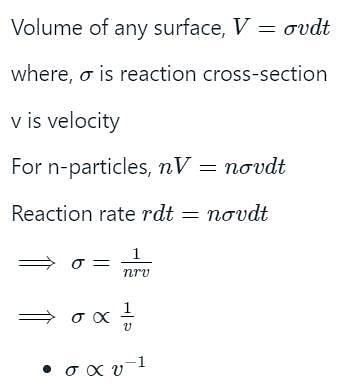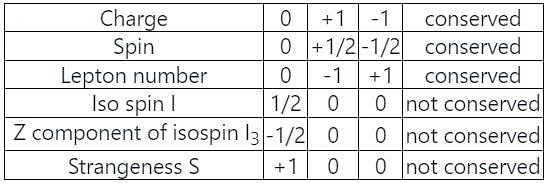Test: Particle Physics - EmSAT Achieve MCQ
10 Questions MCQ Test Physics for EmSAT Achieve - Test: Particle Physics
A thermal neutron having speed v impinges on a 235⋃ nucleus. The reaction cross-section is proportional to
The total angular momentum j of the ground state of the  nucleus is
nucleus is
 nucleus is
nucleus is| 1 Crore+ students have signed up on EduRev. Have you? Download the App |
When  nucleus is bombarded with neutrons, radioactive
nucleus is bombarded with neutrons, radioactive  and certain particles are produced.
and certain particles are produced.
 nucleus is bombarded with neutrons, radioactive
nucleus is bombarded with neutrons, radioactive  and certain particles are produced.
and certain particles are produced.An alpha particle having energy 5 MeV entering into the proportional counter with capacity of 25 pf. The resultant pulse height will be close to:
(Ionisation Potential ~ 15 eV)
A neutral particle X° is produced in π- + p → X° + n by s-wave scattering. The branching ratios of the decay of X° to 2y, 3π and 2π are 0.38, 0.30 and less than 10-3, respectively. The quantum numbers JCP of X° are
The strong nuclear force between a neutron and a proton in a zero orbital angular momentum state is denoted by Fnp(r), where r is the separation between them. Similarly, Fnn (r) and Fpp (r) denote the forces between a pair of neutrons and protons, respectively, in zero orbital momentum state. Which of the following is true on average if the inter-nucleon distance is 0.2 fm < r < 2 fm?
The tensor component of the nuclear force may be inferred from the fact that deuteron nucleus 
The Q - value of the α - decay of 232Th to the ground state of 228Ra is 4082 keV. The maximum possible kinetic energy of the α - particle is closest to
|
208 videos|230 docs|191 tests
|
|
208 videos|230 docs|191 tests
|










 is a stable isotope of hydrogen with one proton and one neutron, making it a unique and crucial example in nuclear physics.
is a stable isotope of hydrogen with one proton and one neutron, making it a unique and crucial example in nuclear physics.















